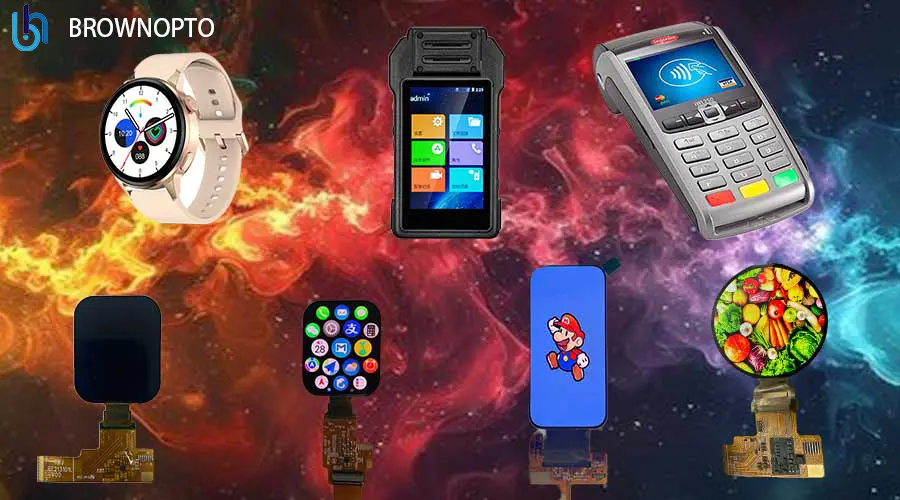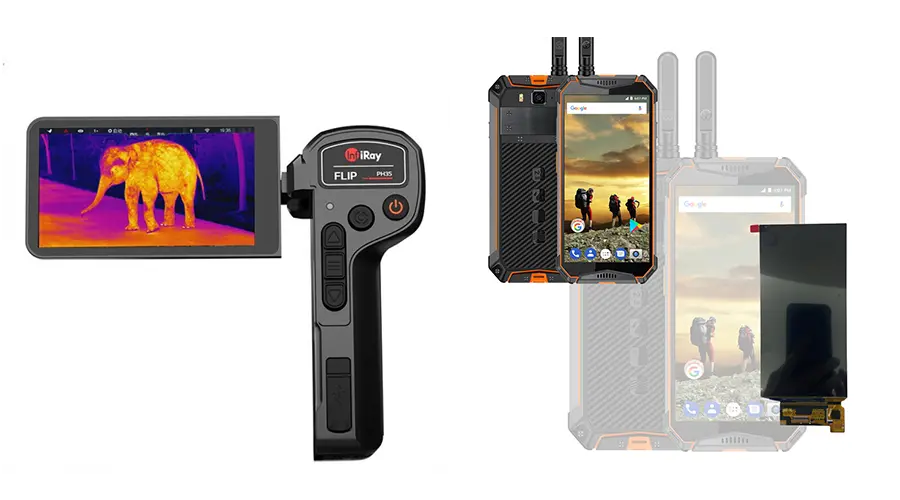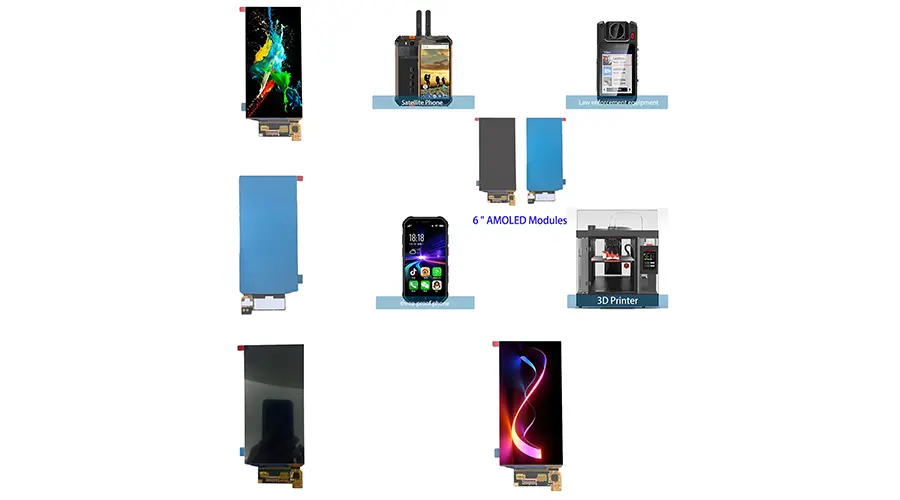A BROWNOPTO Engineering Case Study with MedTech Innovations Inc.
Cliente: MedTech Innovations Inc. — a U.S.-based innovator in point-of-care (POC) diagnostic systems
Application: Portable Blood Chemistry Analyzer for Emergency & Rural Healthcare
BROWNOPTO Product: Custom 4.40" On-Cell Touch LTPS AMOLED Display Module (Model: BR440102-A1)
Interfaccia: MIPI DSI 2-lane, 60Hz refresh rate
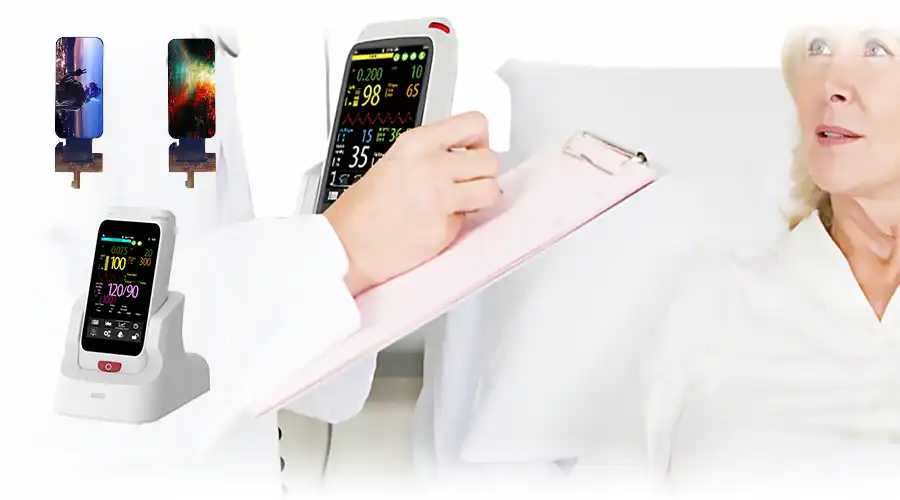
Project Background & Technical Challenges
MedTech Innovations sought to replace the legacy LCD in its flagship handheld blood analyzer with a next-generation display that could meet the stringent demands of clinical and field environments. The device is used by paramedics, lab technicians, and rural health workers—often in uncontrolled lighting, temperature, and humidity conditions.
I requisiti principali per la visualizzazione includevano:
Leggibilità alla luce solare:Luminosità minima di 600 nit con trattamento antiriflesso (AR) per garantire la leggibilità sotto la luce diretta del sole (≥100.000 lux).
Robustezza ambientale:Funzionamento stabile con temperatura ambiente da -20°C a +70°C e umidità relativa del 95% (senza condensa).
Fattori umani:Touch capacitivo compatibile con i guanti, con rifiuto delle dita bagnate e bassa latenza (<20 ms).
Fattore di forma:Spessore del modulo ≤0,8 mm per consentire uno chassis portatile più sottile ed ergonomico.
Conformità normativa:Piena conformità agli standard RoHS 2.0 (2015/863/UE), REACH (SVHC < 0,1%) e materiali privi di alogeni (HF) per apparecchiature mediche.
Affidabilità a lungo termine:Oltre 50.000 ore di durata operativa con degradazione minima della luminanza.
I pannelli AMOLED standard non erano in grado di soddisfare la durabilità meccanica e la coerenza ottica richieste per i dispositivi medici di Classe II. MedTech aveva bisogno di un partner per lo sviluppo congiunto di display, non solo di una semplice fornitura.
Soluzione di visualizzazione AMOLED co-progettata da BROWNOPTO
BROWNOPTO ha avviato un programma di sviluppo congiunto di 6 mesi con i team hardware e firmware di MedTech. La collaborazione ha riguardato la progettazione ottica, l'integrazione meccanica, la validazione elettrica e la documentazione normativa.
Le principali tappe ingegneristiche includevano:
Ottimizzazione dello stack ottico:Integrazione di un polarizzatore ibrido HC (Hard Coat) + AR per ridurre la riflettività della superficie a <1,5% mantenendo la resistenza ai graffi (durezza della matita ≥3H).
Integrazione touch on-cell:Regolazione personalizzata del firmware del controller touch CST3530 per supportare l'input con dita guantate da 5 mm e rifiutare falsi trigger dovuti all'umidità o al contatto con il palmo.
Gestione termica:Implementazione di un FPC (Flexible Printed Circuit) a bassa dilatazione termica per prevenire la delaminazione durante i cicli termici.
Sequenziamento di potenza:Progettazione congiunta dei tempi di accensione/spegnimento del display con il PMIC di MedTech per eliminare lo sfarfallio dello schermo durante l'avvio.
Calibrazione del colore:Calibrazione gamma e punto bianco eseguita in fabbrica (D65, gamma 2,2) per garantire una resa accurata degli elementi dell'interfaccia utente medica (ad esempio, icone di avviso, grafici di tendenza).
Specifiche tecniche
| Parametro | Specifica | Standard di convalida |
|---|---|---|
| Tipo di visualizzazione | Schermo AMOLED LTPS da 4,40" | — |
| Area attiva | 54,3 × 115,8 millimetri | — |
| Risoluzione | 568 × 1210 pixel (Full HD+) | Densità di pixel: 296 PPI |
| Luminosità | 600 nit (tipico), 800 nit (picco) | Misurato secondo ISO 13406-2 |
| Rapporto di contrasto | 100.000:1 (tipico) | Infinito in condizioni di oscurità |
| Tecnologia touch | Capacitivo su cella (CST3530 IC) | Supporta il multi-touch a 10 punti |
| Angolo di visione | ≥85° (tutte le direzioni) | ΔE < 5 a 80° |
| Spessore del modulo | 0,75 mm (escluso FPC) | — |
| Interfaccia | MIPI DSI a 2 corsie, 60 Hz | Conforme a MIPI Alliance v1.3 |
| Temperatura di esercizio | da -20°C a +70°C | IEC 60068-2-1 / -2-2 |
| Temperatura di conservazione | da -30°C a +80°C | — |
| Conformità | RoHS 2.0, REACH, HF, ISO 10993-5 (citotossicità testata) | Dichiarazione completa del materiale disponibile |
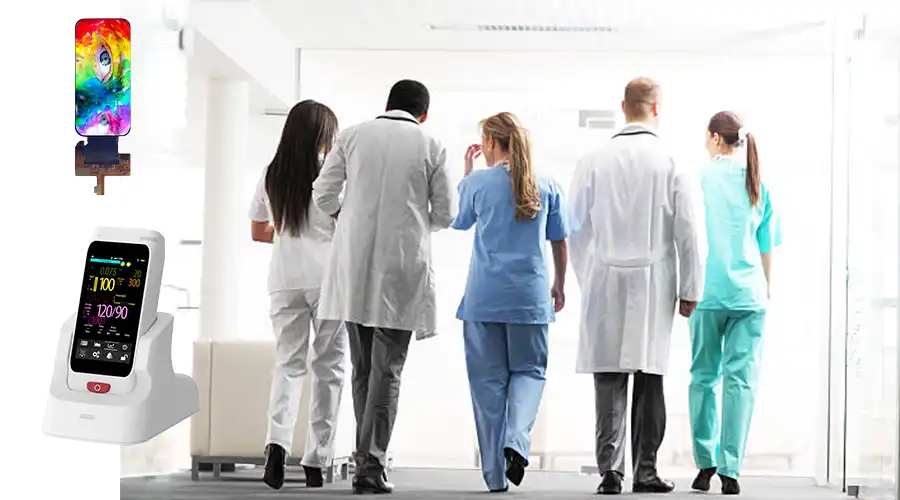
Validation & Field Performance
Il modulo BR440102-A1 è stato sottoposto a rigorose verifiche presso le strutture BROWNOPTO e MedTech:
Test ambientali:Ha superato 240 ore di cicli di temperatura alta/bassa (-20°C ↔ +70°C) e 96 ore di esposizione all'umidità relativa del 95% senza delaminazione o formazione di muffe.
Robustezza meccanica:Ha resistito a 3 cadute da 1,2 m su compensato (secondo IEC 60601-1-11) senza alcun guasto funzionale.
Consistenza ottica:Uniformità della luminanza >85% su tutto il pannello; variazione del colore (Δu'v') < 0,01 in base alla variazione dell'angolo di visione.
Pilota clinico:Distribuito in 500 unità in 12 agenzie di servizi medici di emergenza (EMS) degli Stati Uniti nell'arco di 12 mesi: non sono stati segnalati guasti sul campo correlati al display.
"BROWNOPTO non si è limitata a fornire un display: si è integrata nel nostro processo di NPI. Il loro team di ingegneri ha risolto i problemi di rumore al tocco con cui avevamo lottato per mesi e ha garantito che l'AMOLED soddisfacesse i requisiti di documentazione FDA per la tracciabilità dei materiali. Questa partnership è stata fondamentale per il lancio del nostro prodotto."
— Ingegnere capo dei sistemi hardware, MedTech Innovations Inc.
Perché i display AMOLED BROWNOPTO eccellono nelle applicazioni mediche
L'approccio di BROWNOPTO va oltre la fornitura di componenti. Offriamo un'ingegneria di display end-to-end per applicazioni mission-critical:
Progettazione incentrata sull'applicazione:Display progettati per l'uso pratico, non solo per le specifiche tecniche.
Integrazione verticale:Rivestimento ottico interno, integrazione touch e test di affidabilità.
Supporto normativo:Documentazione completa sulla conformità dei materiali (RoHS, REACH, HF, ISO 10993) per le richieste di dispositivi medici.
NPI scalabile:Dal prototipo alla produzione di massa con qualità costante (PPM < 50).
Supporto globale:Team di ingegneria in Asia, Nord America ed Europa per una risposta rapida.
Pronti a integrare un display AMOLED ad alta affidabilità nel vostro dispositivo medico, industriale o di difesa?
Contatta BROWNOPTOper una consulenza personalizzata sul display: progettato per le prestazioni, costruito per l'affidabilità.
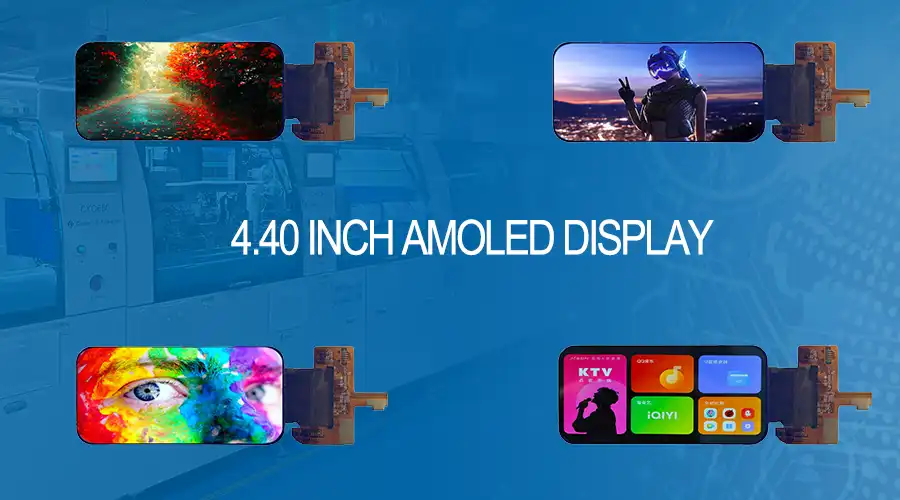
Domande frequenti
Quali sono le cause del burn-in degli OLED e come si può prevenire?
Il burn-in si verifica quando i materiali organici si degradano in modo non uniforme a causa della visualizzazione prolungata di immagini statiche. Per prevenirlo, è possibile utilizzare la funzione di oscuramento automatico, il timeout dello schermo, lo spostamento dei pixel, l'oscuramento dei loghi e l'evitare livelli di luminosità elevati per i contenuti statici.
I display OLED sono adatti per ambienti esterni o ad alta luminosità?
Gli OLED standard hanno difficoltà a illuminare la luce solare diretta a causa della limitata luminosità di picco. Tuttavia, alcuni modelli presentano un'emissione di nit più elevata e rivestimenti antiriflesso. Per un utilizzo esterno completo, si consigliano i Mini-LED o le varianti OLED specializzate ad alta luminosità.
Quanto durano in genere i display OLED?
La durata di vita di un OLED è in genere stimata tra 30.000 e 100.000 ore a L50 (metà luminosità). La durata dipende dalle modalità di utilizzo, dai livelli di luminosità e dalla temperatura di esercizio. I pixel blu si degradano più rapidamente, quindi il bilanciamento del bianco potrebbe variare nel tempo.
Gli OLED possono essere utilizzati per display sempre accesi (AOD)?
Sì, gli OLED sono ideali per l'AOD grazie al basso consumo energetico quando si visualizzano temi scuri o icone di piccole dimensioni. Per ridurre il rischio di burn-in, utilizzare il posizionamento dinamico, una bassa luminosità e limitare i pixel attivi.
Qual è la differenza tra AMOLED e PMOLED?
AMOLED (OLED a matrice attiva) utilizza un backplane TFT per un aggiornamento rapido e risoluzioni elevate, ideale per smartphone e dispositivi indossabili. PMOLED (OLED a matrice passiva) gestisce direttamente righe/colonne, adatto a display più piccoli e semplici, con costi inferiori.
I display OLED supportano la funzionalità touch?
Sì, la maggior parte dei moduli OLED integra strati touch capacitivi (PCAP) o resistivi. Gli OLED flessibili spesso si abbinano a sensori touch curvi per un design uniforme per dispositivi indossabili e automobilistici.
Latest articles
-
Perché gli AMOLED da 1-2" sono fondamentali per AR/XR nel 2025
Perché i display AMOLED da 1-2 pollici stanno diventando essenziali nel boom AR/XR (2025 Industry Insight)body {f
-
Understanding OLED Display Technology: Principles, Performance & Applications
OLED (Organic Light Emitting Diode) displays are a class of self-emissive display technology in whic
-
From Wearables to AR Glasses – How OLED Displays Are Redefining Visual Experiences in 2025
By 2025, OLED (Organic Light-Emitting Diode) technology has transitioned from luxury smartphone disp
-
Display LCD a barra allungata per la vendita al dettaglio: aumenta le vendite e il coinvolgimento nei supermercati
Scopri come i display LCD a barre allungate migliorano il marketing sugli scaffali dei supermercati, aumentano le vendite e riducono
-
Soluzioni LCD allungate per ristoranti e strutture ricettive
Gli LCD allungati offrono display eleganti e ad alta luminosità, perfetti per i menu dei ristoranti e per i servizi di ospitalità

